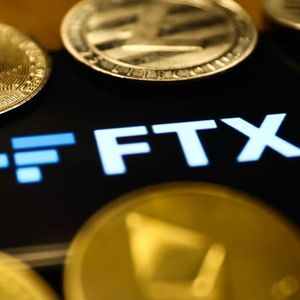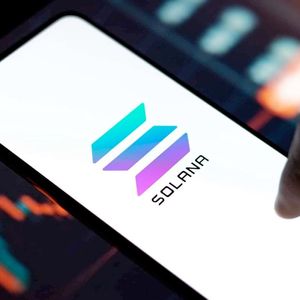In the rapidly evolving world of digital finance, central banks are increasingly exploring innovative technologies to modernize financial infrastructure. The European Central Bank (ECB) is at the forefront of this transformation, recently unveiling its plans to develop a cutting-edge settlement platform for digital ledger transactions . This ambitious project signals a significant step towards embracing the potential of distributed ledger technology (DLT) within the traditional financial system. But what exactly does this mean, and how could it reshape the future of finance? What is the ECB’s Vision for a Digital Settlement Platform? The ECB’s initiative centers around creating a centralized platform designed to settle transactions involving digital assets and potentially central bank digital currencies (CBDCs). This ECB digital ledger settlement platform aims to streamline and enhance the efficiency of financial operations within the Eurozone. Imagine a future where settling complex financial transactions becomes as seamless as sending an email – that’s the direction the ECB is heading. This isn’t just about keeping up with technological trends; it’s about proactively shaping the future of finance to be more resilient, efficient, and inclusive. Let’s break down the key aspects of this groundbreaking plan: Centralized Efficiency: Unlike decentralized cryptocurrency networks, the ECB’s platform will be centralized, allowing for greater control and oversight. This approach aligns with the ECB’s mandate to maintain financial stability and manage monetary policy effectively. DLT Integration: The platform will leverage the core principles of Digital Ledger Technology, offering benefits like enhanced transparency, security, and potentially faster transaction speeds compared to traditional systems. Focus on Settlement: The primary goal is to create a robust and efficient settlement infrastructure. Settlement is the final step in a transaction lifecycle, where the actual transfer of assets occurs. Improving this process is crucial for the smooth functioning of the financial system. Future-Proofing Finance: By embracing DLT, the ECB is preparing the Eurozone financial system for a future where digital assets and potentially CBDCs play a more prominent role. This proactive approach could position the Eurozone as a leader in digital finance innovation. Why is an ECB Settlement Platform Necessary for Digital Assets? The rise of cryptocurrencies and other digital assets has highlighted the limitations of existing settlement infrastructures when it comes to these new forms of value. Traditional systems often involve multiple intermediaries, leading to delays, higher costs, and operational complexities. An ECB settlement platform tailored for digital ledger transactions addresses these challenges directly. Consider these key benefits: Benefit Description Increased Efficiency DLT can automate many processes involved in settlement, reducing manual intervention and processing times. Reduced Costs By streamlining processes and potentially removing intermediaries, transaction costs can be significantly lowered. Enhanced Security DLT’s cryptographic security features can make transactions more secure and resistant to fraud. Improved Transparency Digital ledgers can provide a more transparent record of transactions, enhancing auditability and reducing information asymmetry. Faster Settlement DLT-based systems can potentially achieve near real-time settlement, eliminating delays associated with traditional settlement cycles. How Could This Impact the Broader Crypto Ecosystem? While the ECB digital settlement platform is centralized, its development has significant implications for the broader cryptocurrency ecosystem. It signals a growing acceptance and understanding of DLT by major financial institutions. This initiative could pave the way for greater integration between traditional finance and the digital asset world. Here’s how it could influence the crypto space: Legitimization of DLT: The ECB’s adoption of DLT for a critical financial infrastructure project lends further credibility to the technology and its potential applications. Inspiration for Innovation: Other central banks and financial institutions may be encouraged to explore similar DLT-based solutions, fostering further innovation in the financial sector. Potential Interoperability: While not explicitly stated, there’s potential for future interoperability between the ECB’s platform and certain permissioned or even public blockchains, bridging the gap between centralized and decentralized finance. Regulatory Clarity: As central banks become more involved with DLT, it could contribute to the development of clearer regulatory frameworks for digital assets, reducing uncertainty and fostering responsible innovation. What Challenges and Considerations Lie Ahead? Developing and implementing an ECB settlement platform is not without its challenges. Several critical considerations need to be addressed to ensure the project’s success: Scalability: The platform must be able to handle a high volume of digital transactions efficiently and reliably, especially during peak periods. Security and Cyber Resilience: Robust security measures are paramount to protect the platform from cyber threats and ensure the integrity of transactions. Regulatory Compliance: The platform must comply with existing and evolving financial regulations, including anti-money laundering (AML) and know-your-customer (KYC) requirements. Privacy Concerns: Balancing transparency with privacy is crucial. The platform needs to ensure data privacy while maintaining necessary levels of transparency for regulatory purposes. Interoperability Standards: Developing open standards for interoperability will be essential to ensure seamless integration with other financial systems and potentially future CBDCs. The Future of Digital Transactions and Settlement The ECB’s foray into creating a digital settlement platform marks a pivotal moment in the evolution of financial infrastructure. It underscores the growing recognition of DLT’s transformative potential and the need for central banks to adapt to the changing landscape of finance. As this project progresses, it will be closely watched by financial institutions, technology providers, and the cryptocurrency community alike. This initiative is more than just a technological upgrade; it’s a strategic move to future-proof the Eurozone’s financial system and position it for the digital age. The journey of building this ECB digital ledger settlement platform will undoubtedly be complex, but the potential rewards – a more efficient, secure, and innovative financial future – are immense. Conclusion: A Revolutionary Step Towards Digital Finance The European Central Bank’s plan to establish a digital settlement platform for digital ledger transactions is a revolutionary development in the financial world. It signals a decisive move towards embracing the benefits of DLT and modernizing critical infrastructure. While challenges remain, the potential for increased efficiency, reduced costs, and enhanced security is undeniable. This initiative not only strengthens the Eurozone’s financial system but also sets a precedent for other central banks globally, potentially reshaping the future of finance and fostering greater integration with the burgeoning digital asset ecosystem. The world is watching as the ECB takes this bold leap into the future of digital transactions . To learn more about the latest Forex market trends, explore our articles on key developments shaping global liquidity and institutional adoption.



















